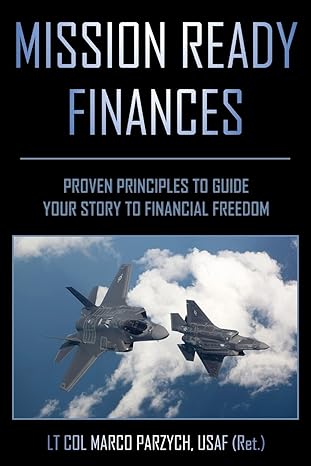 2.comment on the commonly used capital budgeting measures. What is the underlying cause of ranking conflicts? Which criterion is the best one, and why? 3.Which of the projects are unacceptable and why? 4.Rank the projects that are acceptable, according to Jasons criterion of choice. 5.Which project should Jason recommend and why? Explain why each of the projects not chosen was rejected.
2.comment on the commonly used capital budgeting measures. What is the underlying cause of ranking conflicts? Which criterion is the best one, and why? 3.Which of the projects are unacceptable and why? 4.Rank the projects that are acceptable, according to Jasons criterion of choice. 5.Which project should Jason recommend and why? Explain why each of the projects not chosen was rejected.
lable 1 $ A B D 0 (18,200,000) (16,900,000) (19.400,000) (18.500,000) 1 5.700.000 4,700,000 6,700,000 4,400.000 2 5,700,000 4,700,000 6,400,000 3,600,000 3 5,700,000 6,880,000 3.980.000 7.700.000 Debt 40% 4 5,700,000 6,600,000 6,400.000 7.700.000 Preferred Equity 5% 55% 100% Risk Average High Low Average Common Equity Capital Structures Freechoice Telecom has the following capital structure which is considered to be optimal: Table 1 shows the expected after-tax operating cash flows for each project. All projects are expected to have a 4 year life. The projects differ in size (the cost of the initial investment), and their cash flow patterns are different. They also differ in risk as indicated in the above table. The capital budget is $20 million and the projects are mutually exclusive. Cost of Capital Jason knows that in order to evaluate the projects he will have to determine the cost of capital for each of them. He has been given the following data, which he believes will be relevant to his task. 1. The firm's tax rate is 35%. (2) Freechoice Telecom has issued a 9% semi-annual coupon bond with 10 years term to maturity. The current trading price is $1022. (3) The firm has issued some preferred stock which pays an annual 7.5% dividend of $100 par value, and the current market price is $89. (4) The firm's stock is currently selling for $47 per share. Its last dividend (D) was $2.50, and dividends are expected to grow at a constant rate of 6.5%. The current risk free return offered by Treasury security is 2.8%, and the market portfolio's return is 9.5%. Freechoice Telecom has a beta of 1.4. For the bond-yield-plus-risk-premium approach, the firm uses a risk premium of 3.5%. (5) The firm adjusts its project WACC for risk by adding 2.5% to the overall WACC for high-risk projects and subtracting 2.0% for low-risk projects. 1. Calculate all relevant capital budgeting measures for each project, and place your numerical solutions in Table 2. 2. Table 2 A B C D WACC NPV IRR MIRR lable 1 $ A B D 0 (18,200,000) (16,900,000) (19.400,000) (18.500,000) 1 5.700.000 4,700,000 6,700,000 4,400.000 2 5,700,000 4,700,000 6,400,000 3,600,000 3 5,700,000 6,880,000 3.980.000 7.700.000 Debt 40% 4 5,700,000 6,600,000 6,400.000 7.700.000 Preferred Equity 5% 55% 100% Risk Average High Low Average Common Equity Capital Structures Freechoice Telecom has the following capital structure which is considered to be optimal: Table 1 shows the expected after-tax operating cash flows for each project. All projects are expected to have a 4 year life. The projects differ in size (the cost of the initial investment), and their cash flow patterns are different. They also differ in risk as indicated in the above table. The capital budget is $20 million and the projects are mutually exclusive. Cost of Capital Jason knows that in order to evaluate the projects he will have to determine the cost of capital for each of them. He has been given the following data, which he believes will be relevant to his task. 1. The firm's tax rate is 35%. (2) Freechoice Telecom has issued a 9% semi-annual coupon bond with 10 years term to maturity. The current trading price is $1022. (3) The firm has issued some preferred stock which pays an annual 7.5% dividend of $100 par value, and the current market price is $89. (4) The firm's stock is currently selling for $47 per share. Its last dividend (D) was $2.50, and dividends are expected to grow at a constant rate of 6.5%. The current risk free return offered by Treasury security is 2.8%, and the market portfolio's return is 9.5%. Freechoice Telecom has a beta of 1.4. For the bond-yield-plus-risk-premium approach, the firm uses a risk premium of 3.5%. (5) The firm adjusts its project WACC for risk by adding 2.5% to the overall WACC for high-risk projects and subtracting 2.0% for low-risk projects. 1. Calculate all relevant capital budgeting measures for each project, and place your numerical solutions in Table 2. 2. Table 2 A B C D WACC NPV IRR MIRR
 2.comment on the commonly used capital budgeting measures. What is the underlying cause of ranking conflicts? Which criterion is the best one, and why? 3.Which of the projects are unacceptable and why? 4.Rank the projects that are acceptable, according to Jasons criterion of choice. 5.Which project should Jason recommend and why? Explain why each of the projects not chosen was rejected.
2.comment on the commonly used capital budgeting measures. What is the underlying cause of ranking conflicts? Which criterion is the best one, and why? 3.Which of the projects are unacceptable and why? 4.Rank the projects that are acceptable, according to Jasons criterion of choice. 5.Which project should Jason recommend and why? Explain why each of the projects not chosen was rejected.





